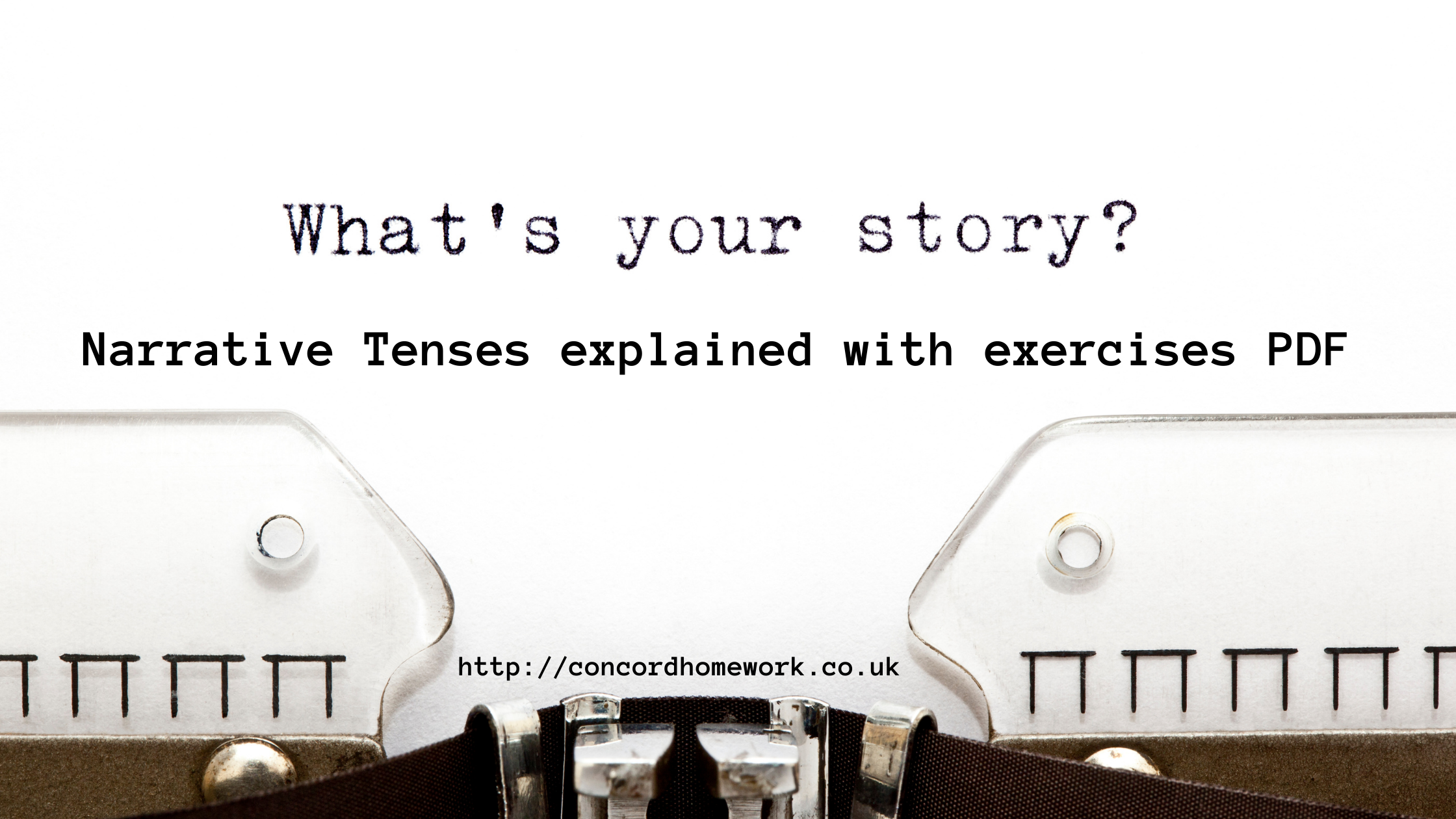Which tenses are used in the narrative tenses?
The past simple, the past continuous, the past perfect, and past perfect continuous.
Examples:
1 We arrived at the airport and checked in.
2 We were having dinner when the plane hit some turbulence. At nine o’clock most people on the plane were reading or were trying to sleep.
3 When we arrived at the airport, we suddenly realized that we’d left one of the suitcases in the taxi.
4 We’d been flying for about two hours when suddenly the captain told us to fasten our seat belts because we were flying into some very bad weather.
Uses of the Narrative Tenses:
1 We use the past simple to talk about consecutive actions or situations in the past, i.e. for the main events in a story.
2 We use the past continuous (was / were + verb + -ing) to describe a longer continuous past action or situation which was in progress when another action happened, or to describe an action or situation that was not complete at a past time.
3 We use the past perfect (had + past participle) to talk about the ‘earlier past’, i.e. things which happened before the main event(s).
4 We use the past perfect continuous (had been + verb + -ing) with action verbs (go, play, watch, etc.) to talk about longer continuous actions or situations that started before the main events happened and continued up to that point. Non-action verbs (e.g. be, have, know, like, etc.) are not normally used in the past continuous or past perfect continuous.
Past perfect simple or past continuous?
Sally was crying because she’d been reading a very sad book.
Sally didn’t want to see the film, because she’d already read the book.
The past perfect continuous emphasizes the continuation of an activity. The past perfect simple emphasizes the completion of an activity.




















